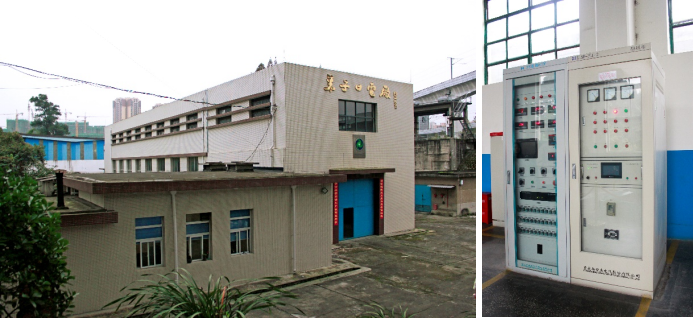Microcomputer Excitation Control System
- Overview
- Main Features
- Main Indicators
- Main functions
- Device Configuration
- The XSJ-1300LC microcomputer excitation control system is an excitation control system aimed at small and medium-sized hydropower station generator sets. This excitation system's excitation control device uses a high-performance DSP as the main control chip, featuring excitation control and adjustment, limitation and protection, online monitoring, fault self-diagnosis, and system communication, supporting IEC 61850 standards, human-machine interface, and other functions.
This product is the company's latest developed high-reliability, powerful generator excitation control system equipment, which can meet the design technical requirements for unattended or unmanned hydropower stations, and is one of the important devices for intelligent hydropower stations.
This product is suitable for single machine capacity of 100MW and below hydropower turbine generator sets, and is also suitable for unattended or unmanned and intelligent hydropower station systems. The application of this excitation control system equipment can improve the reliability and stability of generator excitation control, which is beneficial for the safe and reliable operation of generator sets, and can enhance the intelligence and informatization level of hydropower turbine generator set excitation control. Typical application: Yangzikou Power Station
Typical application: Yangzikou Power Station
1) High reliability
The use of high-performance DSP systems and strong anti-interference design, including strong and weak current isolation, filtering, dual power supplies, dual-channel redundancy, electrical protection, and export safety locking circuits, as well as a shielded standard 19-inch 4U aluminum alloy chassis and functional module structure, enhances the reliability of the excitation device.
2) Good scalability
Designed with expandable modules, flexible configuration of excitation modules for different units and dual-machine mode, supports various communication interfaces and protocols, facilitating system integration.
3) Easy debugging and maintenance
Equipped with debugging interfaces, configuration tools, and comprehensive online monitoring and fault self-diagnosis, modular design, user-friendly graphical human-machine interface, and rich event and debugging information along with fault recording analysis.
1) Control and Adjustment Functions
PID adjustment of generator terminal voltage, PID adjustment of constant excitation current, constant reactive power control, constant power factor control, additional control of power system stabilizer (PSS), manual control, etc. It can also switch operations automatically without disturbance.
2) Limitation and Protection Functions
Instantaneous limitation and protection of low excitation reactive power, delayed limitation and protection of over-excitation reactive power, limitation and protection of strong excitation current inverse time limit, instantaneous limitation and protection of maximum excitation current, limitation and protection of no-load overvoltage, PT disconnection detection and protection, V/F limitation, fast fuse blowing of thyristor rectifier cabinet, wind stop, limitation of maximum excitation current during partial rectifier cabinet removal, thyristor pulse detection and fault handling functions.
3) Online Monitoring and Fault Diagnosis
Can monitor excitation transformer temperature, thyristor temperature, thyristor conduction angle and fuse status, cooling fan status, demagnetization fault status, control circuit (excitation, demagnetization) monitoring, excitation circuit grounding monitoring, etc., with abnormal or fault alarms.
4) System Communication
Equipped with RS485 and Ethernet communication interfaces, supporting communication protocols such as IEC 61850 and MODBUS, and supporting dual network communication.
5) Human-Machine Interface
Can achieve human-machine interaction of the excitation system through LCD and buttons, monitoring, querying, operating, and controlling.
The next one:


